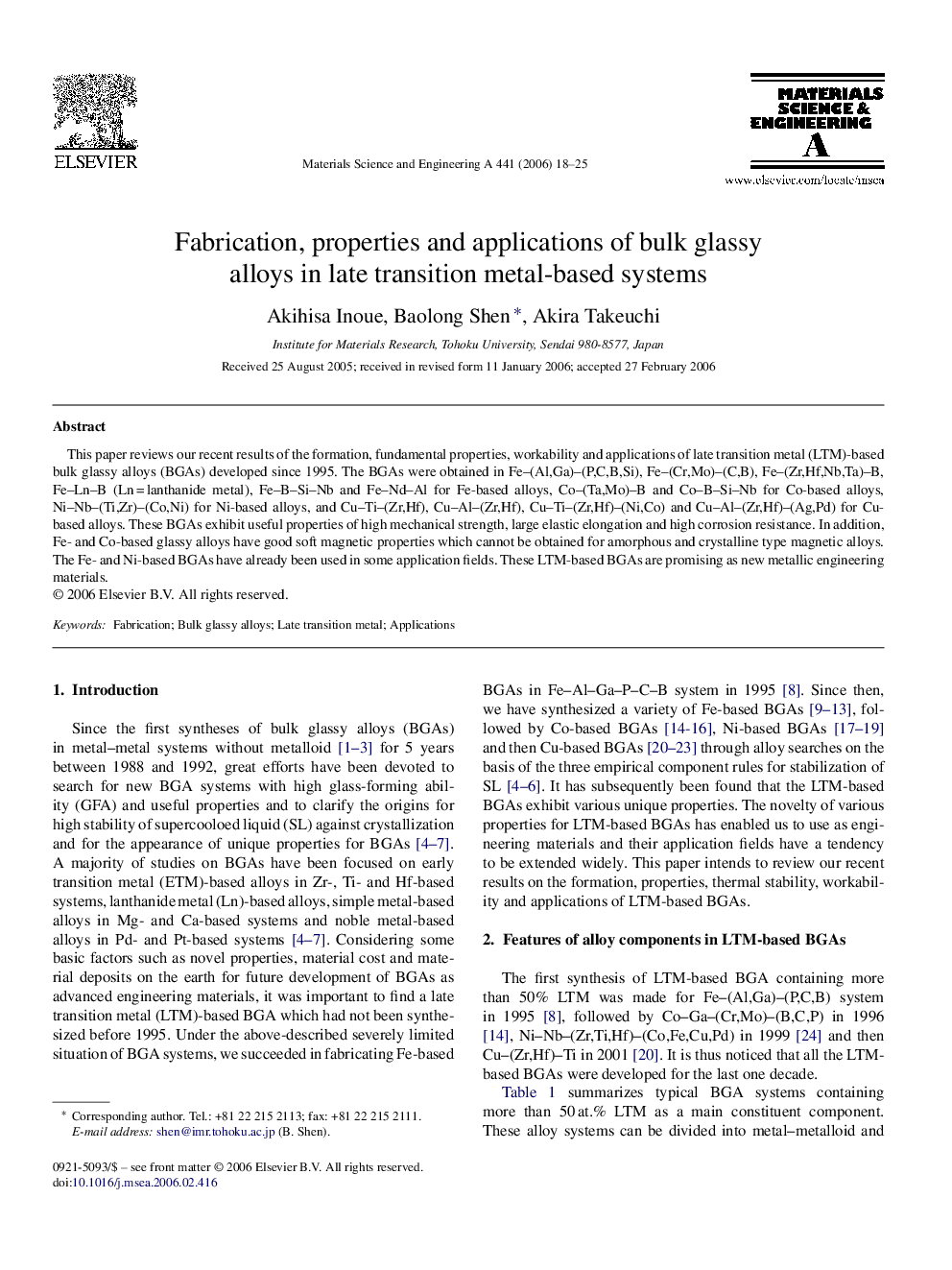| Article ID | Journal | Published Year | Pages | File Type |
|---|---|---|---|---|
| 1584757 | Materials Science and Engineering: A | 2006 | 8 Pages |
This paper reviews our recent results of the formation, fundamental properties, workability and applications of late transition metal (LTM)-based bulk glassy alloys (BGAs) developed since 1995. The BGAs were obtained in Fe–(Al,Ga)–(P,C,B,Si), Fe–(Cr,Mo)–(C,B), Fe–(Zr,Hf,Nb,Ta)–B, Fe–Ln–B (Ln = lanthanide metal), Fe–B–Si–Nb and Fe–Nd–Al for Fe-based alloys, Co–(Ta,Mo)–B and Co–B–Si–Nb for Co-based alloys, Ni–Nb–(Ti,Zr)–(Co,Ni) for Ni-based alloys, and Cu–Ti–(Zr,Hf), Cu–Al–(Zr,Hf), Cu–Ti–(Zr,Hf)–(Ni,Co) and Cu–Al–(Zr,Hf)–(Ag,Pd) for Cu-based alloys. These BGAs exhibit useful properties of high mechanical strength, large elastic elongation and high corrosion resistance. In addition, Fe- and Co-based glassy alloys have good soft magnetic properties which cannot be obtained for amorphous and crystalline type magnetic alloys. The Fe- and Ni-based BGAs have already been used in some application fields. These LTM-based BGAs are promising as new metallic engineering materials.
